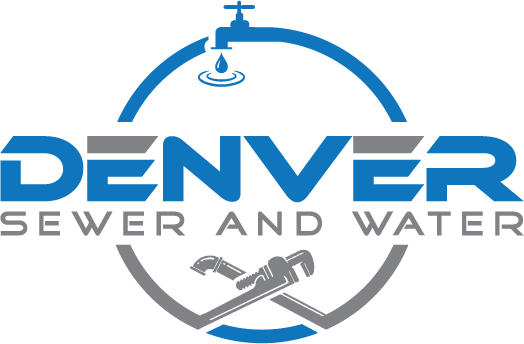How to Remove Calcium, Minerals & Limestone Build Up Fast, From Faucets, Drains & Pipes
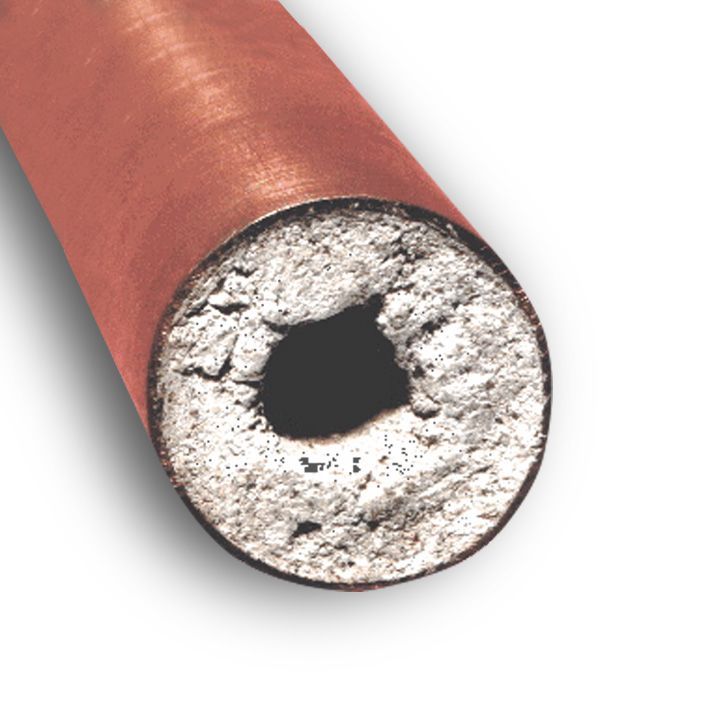
Calcium and mineral buildup in drains and pipes
A very serious issue that demands immediate attention. If left unaddressed, these buildups can severely impact your plumbing system, leading to slow drainage or even complete blockages. The good news is, there are numerous effective techniques you can employ to remove and prevent calcium and mineral buildup, ensuring the long-term health of your drains and pipes.
One of the primary culprits behind calcium and mineral deposits is hard water. This type of water contains high levels of calcium and magnesium, which gradually accumulate within pipes. A practical solution to this issue is the installation of a water softener. We found that when we replace calcium and magnesium in the water with sodium ions, \the water works better. A water softener prevents the formation of scale deposits within the drain & sewer pipes, thereby averting buildups.
Professional plumbers often use a combination of vinegar and baking soda to remove calcium and mineral buildup from drains and pipes. Vinegar, a natural solid acid, effectively breaks down mineral deposits. Baking soda, on the other hand, is an excellent cleaning agent that can dislodge debris stuck in the pipes. When vinegar & Baking Soda are combined, a chemical reaction occurs.
The vinegar, which is an acid, reacts with baking soda, which is a base, producing carbon dioxide gas and water. This reaction helps break down the mineral deposits, which can then be flushed away.
It's also worth noting that regular cleaning of your drains and pipes can prevent the accumulation of calcium and mineral deposits. Regular use of a drain cleaner designed to break down minerals, like citric acid-based cleaners, can be beneficial.
For more stubborn calcium deposits, professional plumbing help might be necessary. Plumbers have specialized tools and chemicals that effectively remove calcium and mineral buildup from drains and pipes.
Removing calcium and mineral buildup from drains and pipes is crucial in maintaining an efficient plumbing system. While there are various methods to do so, preventative measures such as using a water softener and regular cleaning can ensure that your drains and pipes remain free from calcium and mineral deposits for good.
What is Calcium & Mineral Build up, Why Does It Build up on Pipes & Drains?
Calcium and mineral buildup, often called hard water deposits or limescale, is an accumulation of minerals in the water supply that can adhere to pipes and drains. Hard water is characterized by a high concentration of calcium and magnesium ions. Over time, these minerals can precipitate out of the water and form deposits on the interior surfaces of pipes and fixtures. This phenomenon is widespread in areas where the local water supply has a high mineral content.
Understanding the chemistry of water is key to addressing the question, 'What is calcium & mineral buildup? Why do pipes & drains get affected?' Water, a universal solvent, can dissolve a wide range of substances. When water encounters soil and rock formations containing calcium or magnesium, these minerals are often dissolved into the water. This process, whether natural or due to human activity such as mining or agriculture, is the root cause of calcium and mineral buildup.
The buildup of calcium and other minerals in sewer, drain, Waterpipes and drains is not a trivial matter. These deposits, if left unchecked, can gradually reduce the diameter of the pipe, impeding the flow of water and leading to decreased efficiency in plumbing systems. The long-term effects can be severe, potentially necessitating costly repairs or even replacement of pipes and equipment.
Furthermore, calcium and mineral buildup can also affect the quality of water. High levels of calcium & minerals can lead to water hardness, negatively affecting household appliances such as home washing machines and kitchen dishwashers. Hard water is known also to cause skin irritation and dull hair due to the high mineral content. The pH level of the water can affect how quickly minerals deposit and harden onto pipe and drain surfaces. Water with a higher pH is more alkaline and can precipitate these minerals more quickly, leading to faster accumulation.
The implications of calcium and mineral buildup in pipes and drains can be significant. Over time, these deposits can reduce the effective diameter of the pipes, restricting water flow and leading to reduced pressure. When we have severe cases, they can even lead to complete blockages. Also, hard water deposits can cause corrosion over time, damaging the drain & sewer pipes. It is very important that
Prevention and regular maintenance are the keys to managing calcium and mineral buildup in pipes and drains. This can be achieved through the use of good water softeners that replace calcium and magnesium ions with sodium or potassium ions. Regular cleaning of fixtures and appliances that may come into contact with hard water is also effective in minimizing buildup. By implementing these measures, homeowners and plumbers can significantly reduce the impact of calcium and mineral buildup on drains, pipes, and water quality.
Calcium and mineral buildup are common issues that affect pipes and drains due to the minerals present in the water supply. Understanding what calcium and mineral buildup is and why it affects pipes and drains is crucial for effectively managing and preventing this phenomenon. Regular maintenance and preventative measures can minimize the impact of calcium and mineral buildup on drains & pipes and water quality.
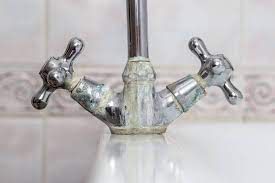
Getting Rid of Calcium Buildups & Limescale
Addressing the issue of calcium buildups and limescale is a serious concern and should be fixed immediately for homeowners and businesses. These deposits, formed when hard water evaporates, can mar the aesthetic appeal and functionality of fixtures and appliances. The unsightly white or grayish crusts or stains they leave behind are just the beginning. If left unchecked, these buildups can lead to significant damage, making their removal a matter of utmost importance.
Dealing with calcium buildups requires a two-pronged approach: regular maintenance and targeted treatment. Regular cleaning with suitable products is an excellent preventive measure. But when the buildups have become significant, it's time to bring out the big guns. However, take into account the power of natural methods. With their acidic nature, solutions like vinegar or lemon juice can work wonders on these mineral deposits. Soaking or scrubbing affected areas with these substances can effectively dissolve the buildups, giving you the power to restore your fixtures and appliances to their former glory.
Limescale, in particular, can be challenging to deal with as it often forms in hard-to-reach areas like inside pipes, kettles, and hot water heaters. If not promptly addressed, limescale can decrease the efficiency of appliances and even lead to breakdowns. Therefore, getting rid of limescale is not just about maintaining appearances or appliances such as kettles or coffee makers; the process of getting rid of calcium buildups and limescale typically involves filling the appliance with a mixture of water and vinegar or a professionally made descaler, and then running the appliance as you normally would.
After running the appliance, it is important to rinse it thoroughly to ensure that no vinegar or descaler residue remains.
Several strategies exist for getting rid of calcium buildups and limescale. For instance, commercial cleaners designed to combat these issues can be effective, especially with regular cleaning routines. However, these products should be used cautiously due to their often-harsh chemical nature.
Alternatively, numerous natural methods are available to remove calcium buildups and limescale. Due to their acidic nature, solutions such as vinegar or lemon juice can work wonders on these mineral deposits. Soaking or scrubbing affected areas with these substances can dissolve the buildups without harming the underlying material.
Managing calcium buildups and limescale is crucial to maintaining a clean and functional home or business environment. Regular cleaning and early intervention are your best friends in preventing significant buildups. Whether you choose commercial or natural treatments, the key is to act swiftly. By being proactive with your approach, you can effectively manage these issues, ensuring that your fixtures and appliances stay in optimal condition.
What Are the Best Ways To Remove Calcium Buildup and Minerals Caused by Hard Water that Clogs Up Your Drain? For appliances such as kettles or coffee makers, getting rid of calcium buildups and limescale typically involves filling the appliance with a mixture of water and vinegar or a professionally made descaler and then running the appliance as you normally would. After running the appliance, it is important to rinse it thoroughly to ensure that no vinegar or descaler residue remains.
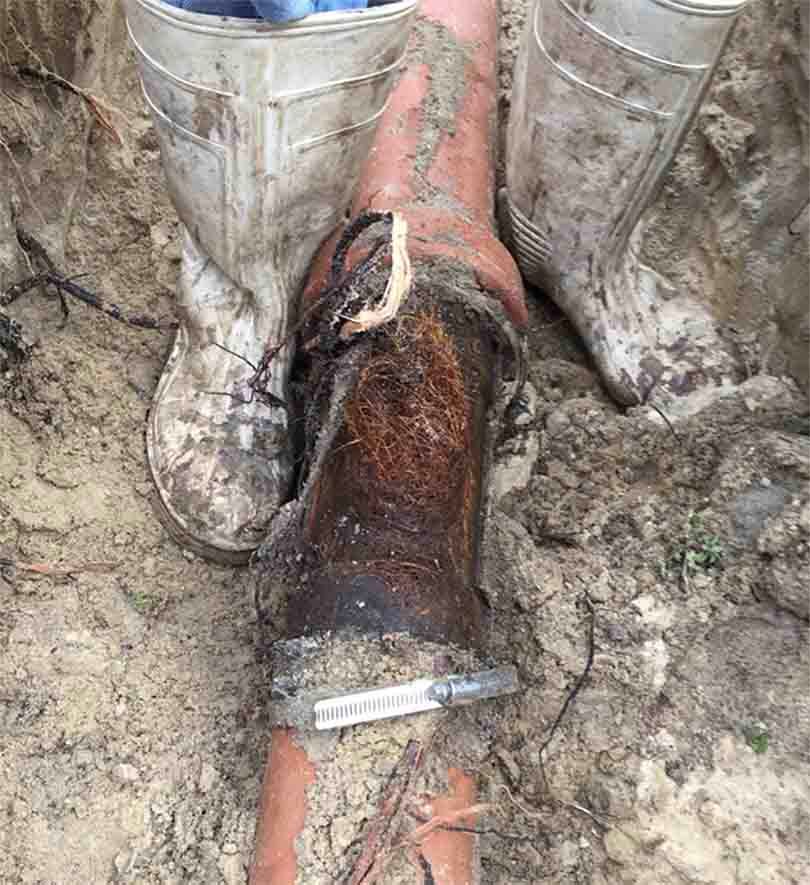
Calcium Build Up in Sewer Pipes
Many residential and commercial property owners face calcium buildup in sewer pipes. This calcium buildup can lead to a variety of problems, including reduced water flow, pipe corrosion, and, in severe cases, complete blockage. Understanding Calcium Buildup in Sewer Pipes and how to manage it is crucial for maintaining an efficient and effective sewage system.
Calcium buildup in Sewer Pipes is not sudden but gradual, taking place over an extended period. Water contains various minerals, including calcium, which can precipitate out of the water and stick to the interior surfaces of the pipes. These deposits continue to accumulate over time, eventually leading to a significant buildup that can compromise the efficiency of the sewer system. This calcium buildup, often referred to as 'scale,' resembles a hard, chalky substance.
The consequences of Calcium buildup in Sewer Pipes can be severe for the overall sewer line and pipe. A minor buildup may result in reduced water flow through the pipes, while a more serious accumulation can lead to total blockage. This can cause significant issues such as backflow or overflowing toilets and sinks. Moreover, calcium buildup can lead to pipe corrosion over time, resulting in leaks and potentially expensive repairs or replacements. One of the main problems with calcium buildup in sewer pipes is that it can significantly reduce the diameter of the pipe over time.
Calcium buildup in sewer pipes is a prevalent issue for many property owners. This buildup can cause a range of problems, from reduced water flow to pipe corrosion and, in severe cases, complete blockage. Grasping the concept of Calcium Build Up in Sewer Pipes and learning how to manage it is not just important, it's crucial for maintaining an efficient and effective sewage system.
Calcium buildup in Sewer Pipes is not sudden but gradual, taking place over an extended period. Water contains various minerals, including calcium, which can precipitate out of the water and stick to the interior surfaces of the pipes. These deposits continue to accumulate over time, eventually leading to a significant buildup that can compromise the efficiency of the sewer system. This calcium buildup, often referred to as 'scale,' resembles a hard, chalky substance.
The consequences of Calcium buildup in Sewer Pipes can be severe for the overall sewer line and pipe. A minor buildup may result in reduced water flow through the pipes, while a more serious accumulation can lead to total blockage. This can cause significant issues such as backflow or overflowing toilets and sinks. Moreover, calcium buildup can lead to pipe corrosion over time, resulting in leaks and potentially expensive repairs or replacements.
Sewer Pipes and Calcium & Mineral Build Up
One of the main problems with calcium buildup in sewer pipes is that it can significantly reduce the diameter of the pipe over time. Calcium buildup restricts the flow of wastewater and can lead to increased pressure within the pipe. In severe cases, this could cause the pipe to rupture or crack, leading to significant water damage and potentially expensive repairs. Moreover, if left untreated, calcium buildup can harden into a substance similar to concrete, making it even more difficult and costly to remove.
Several methods are available for dealing with calcium buildup in sewer pipes. Regular maintenance and cleaning of your sewer system are crucial in preventing severe calcium buildup. This could involve using a special type of high-pressure jetting system to clear out the pipes or more traditional methods like snaking. In more severe cases, it may be necessary to replace sections of the pipe that have been significantly affected by calcium buildup.
It is vital to promptly and effectively address Calcium Build Up in Sewer Pipes to prevent severe damage and maintain the efficiency of the sewer system. Several methods exist, including mechanical cleaning with specialized tools, using chemical agents to dissolve the buildup, or employing hydro-jetting techniques. However, prevention is always better than cure. Regular inspections and maintenance of sewer pipes can help identify early signs of calcium buildup or haed water and address it before it becomes a significant issue.
Calcium buildup in sewer pipes is a significant issue that requires homeowners' and property managers' attention. It's essential to understand the cause, potential problems it presents, and solutions for dealing with this common plumbing concern. By managing this issue effectively, it is possible to maintain a healthy and efficient sewer system, preventing costly damages and ensuring the smooth operation of the property's plumbing infrastructure.
Restricts the wastewater flow and can lead to increased pressure within the pipe. This could cause the pipe to rupture or crack in severe cases, leading to significant water damage and potentially expensive repairs. Moreover, if left untreated, calcium buildup can harden into a substance similar to concrete, making it even more difficult and costly to remove.
Several methods are available for dealing with calcium buildup in sewer pipes. Regular sewer system maintenance and cleaning are crucial in preventing severe calcium buildup. Calcium buildup could involve using a high-pressure jetting system to clear out the pipes or using more traditional methods like snaking. In more severe cases, replacing sections of the pipe that have been significantly affected by calcium buildup may be necessary.
It is vital to promptly and effectively address Calcium Build Up in Sewer Pipes to prevent severe damage and maintain the efficiency of the sewer system. Several methods exist, including mechanical cleaning with specialized tools, using chemical agents to dissolve the buildup, or employing hydro-jetting techniques. However, prevention is always better than cure. Regular inspections and maintenance of drain pipes can help identify early signs of calcium buildup, mineral issues and fix the hard water before it becomes a significant issue.
Calcium buildup in sewer pipes is a significant issue that requires the attention of homeowners and property managers. It's essential to understand the cause, potential problems it presents, and solutions for dealing with this common plumbing concern. By managing this issue effectively, it is possible to maintain a healthy and efficient sewer system, preventing costly damages and ensuring the smooth operation of the property's plumbing infrastructure.
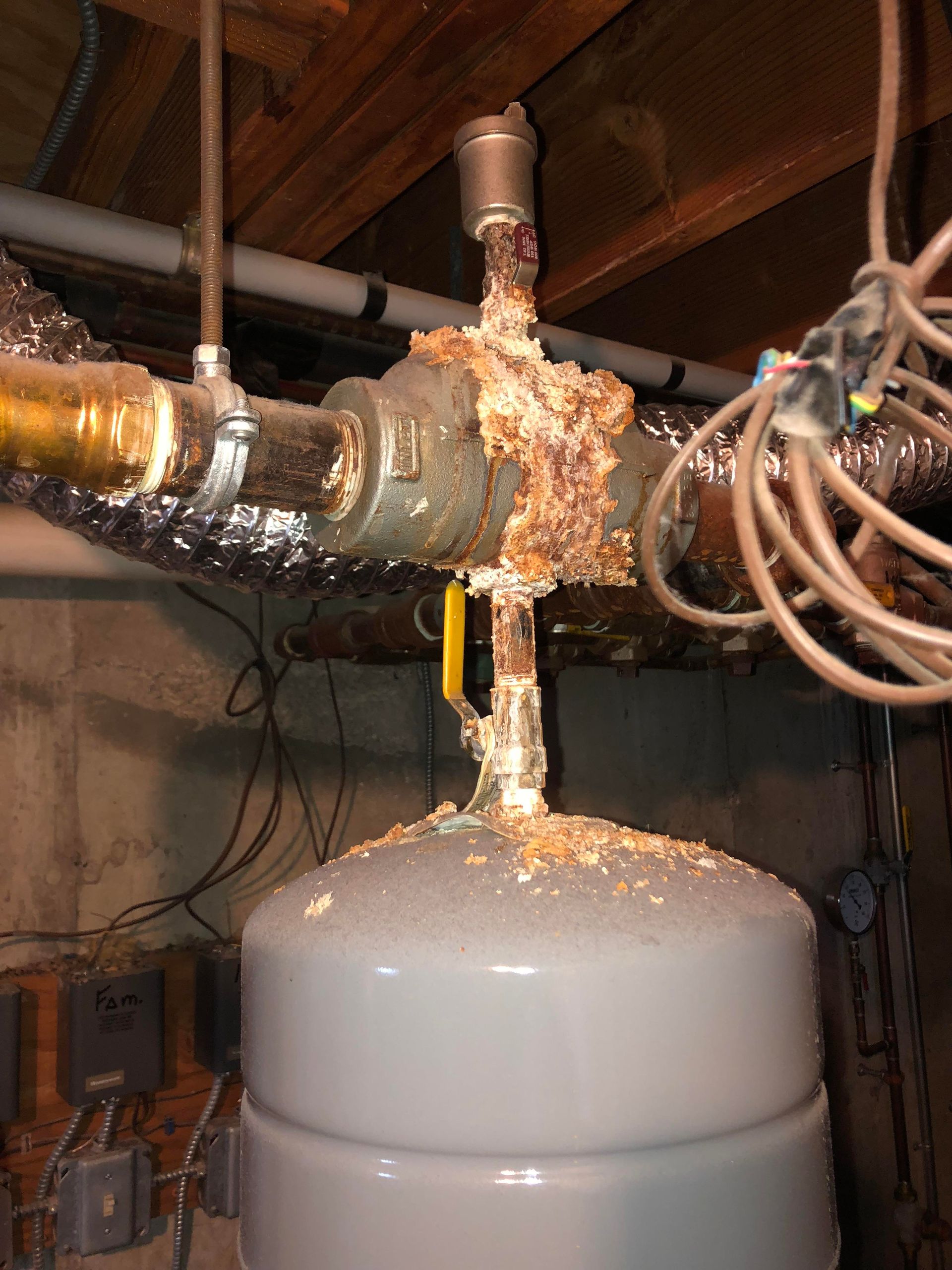
How To Clean Calcium Out of Water Heater
Understanding how to clean calcium in the water heater can greatly enhance the performance and longevity of your appliance. Calcium deposits, also known as limescale, can build up over time and impede the function of the water heater, reducing its efficiency and potentially leading to premature failure if not addressed in a timely manner. Here are some steps to help you understand how to clean calcium in the water heater.
Firstly, you'll need to drain the water heater. This involves turning off the power or gas supply to the unit, attaching a garden hose to the drain valve and directing the water to a suitable location outside your home. It is vital to remember that the water will be hot and under pressure, hence caution should be taken to avoid any risk of injury. Let the water heater cool off.
Once the heater is drained, the next step on how to clean calcium in the water heater is detaching the drain valve completely. For this procedure, you might require a pipe wrench. Once removed, you can inspect the inside of the tank for visible calcium deposits.
A common method employed in how to clean calcium in the water heater involves using vinegar, which acts as a natural descaler. You can pour two to three gallons of white vinegar into the tank, then replace the drain valve and refill the tank with water. Allow this solution to sit for at least six hours, or overnight if possible.
After refilling the water tank with water and letting it sit for a few hours or overnight if possible, allowing sufficient time for the vinegar solution to work its magic, you'll need to drain the tank again. This will flush out the vinegar along with any loose calcium deposits. After thoroughly draining, refill your tank with fresh water.
Finally, turn on the power or gas supply back on and let your water heater return to its normal operation. This process of how to clean calcium in the water heater should be repeated every one to three years, depending on your water hardness and usage. Knowing how to clean calcium in the water heater is a crucial skill for maintaining your water Heater Regular maintenance can help you avoid costly repairs or replacements in the future and ensure that your water heater continues to operate at optimum efficiency.
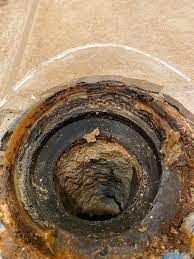
Calcium Buildup in Toilet Drain Pipes
A common plumbing issue that can lead to significant problems if not addressed promptly. This phenomenon occurs when hard water, which contains high levels of calcium and other minerals, passes through the pipes. Over time, these minerals accumulate on the inner walls of the pipes, forming a tough, solid deposit known as scale or limescale.
The buildup of scale within the toilet drain pipes can lead to various issues. Firstly, calcium buildup can narrow the diameter of the pipe, restricting water flow and resulting in poor flushing efficiency. This can cause toilets to clog more frequently and may even lead to backups, which are both inconvenient and unsanitary. Moreover, if left unchecked, the calcium buildup can corrode the pipes over time, leading to leaks and potentially costly repairs.
It is essential to note that calcium buildup in toilet drain pipes is more than just a functional issue; it's also a health concern. The accumulation provides an ideal environment for bacteria and other pathogens to grow, which can contaminate the water supply and pose a risk to household members' health. Addressing calcium buildup in toilet drain pipes requires professional intervention. Plumbers have access to specialized tools and chemicals that can safely break down and remove the buildup without damaging the pipes. In some cases, if the buildup is too severe or the pipes are already damaged, replacement might be necessary.
Prevention is always better than cure when it comes to calcium buildup in toilet drain pipes. Regularly maintaining your calcium, plumbing system, using water softeners to reduce the hardness of your water, and avoiding flushing items that can exacerbate the problem (like wet wipes or heavy paper products) are all effective strategies. One common method to tackle calcium buildup in toilet drain pipes involves using a commercial drain cleaner. These products contain chemicals that break down the calcium deposits, making it easier to flush them out of the system.
However, it's essential to use these products with caution as they can be harmful if mishandled and may cause damage to certain types of pipes. Another solution to the "Calcium Buildup Toilet Drain Pipes what solution to use" problem is using a home-made concoction of vinegar and baking soda. The acidic nature of vinegar dissolves the calcium deposits while baking soda acts as a scrubbing agent. Pouring this mixture into your toilet drain pipes and letting it sit for a few hours can help loosen and remove the buildup.
Calcium buildup in toilet drain pipes is a serious issue that requires immediate attention. It can cause functional issues with your plumbing system, pose a health risk, and potentially lead to costly repairs or replacements if not addressed promptly. Regular maintenance and prevention strategies can help keep your toilet drain pipes clear of calcium buildup and ensure the longevity of your toilet drain pipes.
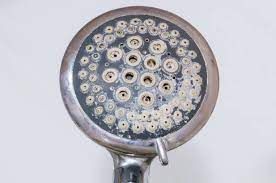
How to Remove Calcium Build Up from Shower Head & Drain?
Calcium build-up on showerheads and drains is a common household problem that can decrease water flow and affect the overall functionality of your bathroom facilities. Understanding how to remove calcium build-up from shower heads and drains is essential to maintain your fixtures in top condition.
The first step in removing calcium build-up is to identify the extent of the issue. A white or grey crusty layer on your showerhead or around your drain indicates a calcium deposit. These deposits are a result of hard water, which is rich in minerals like calcium and magnesium. These minerals solidify over time, causing the build-up. Once you've identified calcium build-up, remove the shower head if possible. This allows for a more thorough cleaning process. If you cannot remove the showerhead, don't worry; there are other ways to clean it effectively.
One popular method on how to remove calcium build-up from shower heads and drains involves using white vinegar. Fill a plastic bag with white vinegar and tie it around the showerhead so that the fixture is submerged in the vinegar. For drains, pour a cup of white vinegar directly into the drain and leave it for about fifteen minutes. The acidity of the vinegar helps dissolve the calcium deposits.
After soaking the showerhead or drain in vinegar, remove the bag (for showerheads) or rinse with hot water (for drains). Use a scrub brush or an old toothbrush to scrub off the loosened deposits. For stubborn stains, a toothpick can be used to pick out the build-up in small crevices.
Another method on how to remove calcium build-up from shower heads and drains involves commercial cleaning calcium & mineral build up are designed specifically for this purpose. These products like CLR calcium, lime & rust remover or Zep calcium, lime & rust remover generally contain a stronger acid than vinegar, making them more effective at breaking down tough deposits.
However, they should be used with caution due to their corrosive nature. Always remember to rinse thoroughly after cleaning to remove any residual acid that could potentially damage your fixtures. Repeat the process as necessary until all the calcium build-up is removed.
Learning how to remove calcium build-up from shower heads and drains is a relatively simple task that can greatly improve the performance and lifespan of your bathroom showerhead and shower drain. Make sure you clean shower heads, drains & faucets monthly with vinegar and it will never have a calcium or mineral buildup. Whether you choose a natural method like vinegar or a commercial cleaner, regular maintenance is key to preventing future build-up.
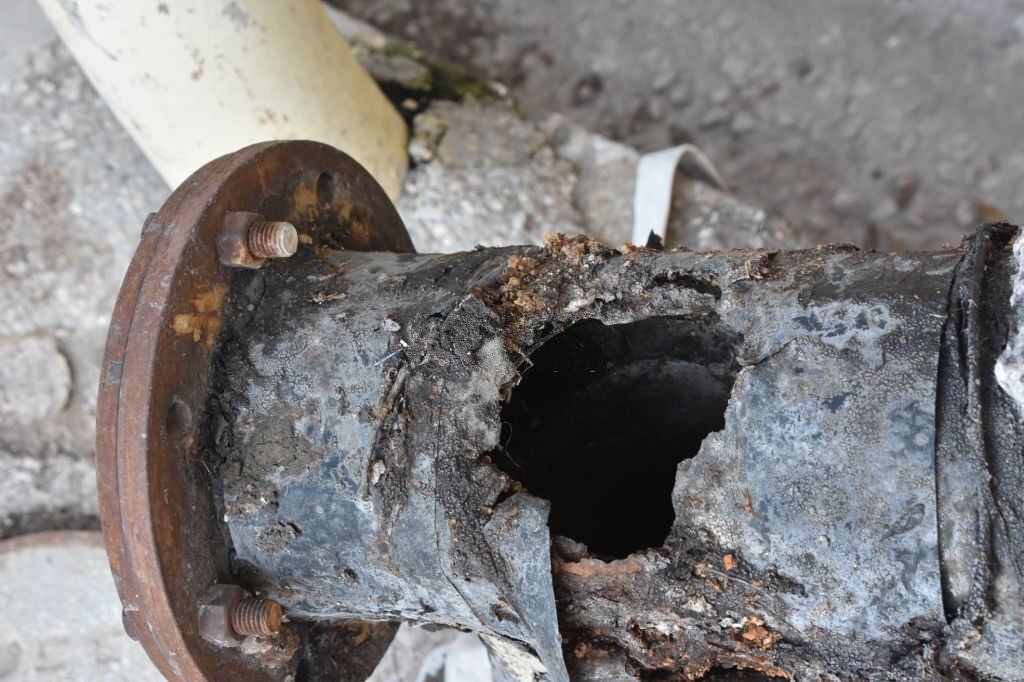
Can Hard Water and Mineral Buildup Clog Pipes & Cause Damage?
Hard water and mineral buildup are serious concerns that can lead to drain, sewer & water pipes clogging and cause substantial damage. An elevated concentration of minerals such as calcium and magnesium characterize hard water. When water flows through the pipes, these minerals can precipitate and accumulate, leading to mineral buildup. This accumulation constricts the water flow, causing a clog in the pipes.
The question "Can Hard Water and Mineral Buildup Clog Pipes & Cause Damage?" is thus of significant importance. The answer is a resounding yes. Regular exposure to hard water can cause sedimentation in the pipe system, leading to blockages that can severely impact the efficiency of your plumbing system. These blockages decrease the water pressure and cause pipes to burst if the pressure becomes too high.
Hard water and mineral buildup can clog pipes and damage them by corroding the pipe material over time. The constant reaction between the minerals in hard water and the pipe materials can lead to deterioration and eventual failure of the pipes. This damage can be costly and may sometimes necessitate a complete drain or sewer pipe replacement.
Moreover, hard water and mineral buildup can adversely affect water appliances, such as dishwashers and washing machines. Mineral deposits can decrease the efficiency of these appliances and significantly shorten their lifespan. So, it's not just about clogged pipes; hard water and mineral buildup can have far-reaching implications on several aspects of your home.
To mitigate these issues, it's crucial to regularly check your drain, sewer, and water pipes for any signs of hard water or mineral buildup. In regions with hard water, homeowners might consider installing a water-softening system to reduce the concentration of minerals in their water supply.
Hard water and mineral buildup can indeed clog pipes and cause damage to drains & sewer lines. The complications arising from this issue go beyond mere clogs; they can lead to costly repairs and replacement of pipes and appliances. Therefore, it's not just essential, but imperative to address this problem promptly and take preventive measures to protect your drain & sewer & water pipes and appliances.

Does Calcium Build Up Clog up Sink, Bathtub, Drains?
Hard water is a common and often overlooked issue in most households. One of its most prominent effects is the buildup of calcium, which can cause significant problems in various parts of the house, especially in sinks, bathtubs, and drains. So, does calcium build up and clog up the sink, bathtub, and drain? The answer is a resounding yes.
Calcium buildup, or limescale, is a complex, off-white crust that forms when water containing high levels of minerals, like calcium and magnesium, evaporates, leaving the minerals behind. Calcium buildup, minerals & limescale are frequent in areas where the water supply contains high levels of these minerals. As such, "Does calcium buildup clog up sink, bathtub, or drain?" becomes pertinent for homeowners in these regions.
In sinks and bathtubs, calcium accumulates over time, clinging to surfaces and forming stubborn deposits. While it may start as a cosmetic issue — presenting as white or off-white streaks or spots — it can quickly escalate into something more problematic. As the calcium builds up, it can lead to blockages in the drainage system, affecting the smooth flow of water.
Calcium buildup clogs up sinks and bathtub drains; a slightly different approach is needed for drain cleaning. Pour a cup of white vinegar down the drain slowly, followed by a cup of baking soda. Combining these two ingredients will create a fizzing reaction that can help break down the calcium deposits. After letting this mixture sit in the drain for 15-30 minutes, rinse it with boiling water. This method should effectively remove the majority of calcium buildup in your drain.
The scenario is the same when it comes to sewer, toilet, floor, shower and sink drains. The continuous flow of hard water through drains inevitably leads to calcium buildup. If left unchecked, this buildup can constrict the passageway in the pipes, leading to blockages that can disrupt the functioning of the entire drainage system. Hence, when asked, "Does calcium build up clog up drains?" the response remains affirmative.
Despite its potential to cause significant plumbing issues, calcium buildup is not an insurmountable problem. With regular cleaning and maintenance of sinks, bathtubs, and drains, homeowners can effectively keep limescale at bay. There are also a variety of commercial products available that can easily and effectively remove calcium deposits. In more severe cases, professional plumbing services may be necessary, but with the right knowledge and tools, homeowners can take control and restore their drainage system's functionality.
It's crucial to remember that calcium buildup can and does indeed clog up sinks, bathtubs, and drains. This should serve as a reminder of the importance of regular maintenance and prompt action at the first sign of calcium buildup. By being proactive and addressing the issue early on, homeowners can prevent more serious plumbing problems in the future.
Therefore, the question is, "Does calcium build up clog up a sink, bathtub, or drain?" Calcium buildup, Mineral & limescales buildup should underscore the necessity of regular cleaning and maintenance for homeowners.
For drain cleaning, a slightly different approach is needed. Pour a cup of white vinegar down the drain slowly, followed by a cup of baking soda. Combining these two ingredients will create a fizzing reaction that can help break down the calcium deposits. After letting this mixture sit in the drain for 15-30 minutes, rinse it with boiling water. This method should effectively remove most of the calcium buildup in your drain.
Can Calcium Build Up Affect a Dishwasher’s Tubes & Pipes
Yes, calcium buildup can significantly affect a dishwasher's tubes and pipes. The issue is more prevalent in areas that have hard water, which is rich in minerals such as calcium and magnesium. When hard water is heated in the dishwasher, these minerals can precipitate out and form deposits on the interior surfaces of the dishwasher, including its tubes and pipes.
Over time, these accumulations can become substantial, leading to several problems. Calcium buildup in a dishwasher's tubes and pipes can drastically reduce the appliance's efficiency. For one, mineral deposits can narrow the diameter of the tubes and pipes, impeding water flow. Calcium buildup may also result in compromised cleaning performance, as the water pressure needed to rinse dishes effectively may not be achieved. Moreover, the buildup can also cause blockages that might lead to issues in draining, potentially resulting in leaks or even flooding.
The buildup of calcium can also harm your dishwasher's lifespan. The accumulated minerals can cause corrosion over time, wearing down the material of the pipes and tubes and ultimately contributing to their premature failure. Further, if the calcium buildup is not addressed promptly, it could reach other parts of the dishwasher, like the pump or heating elements, causing them to fail.
The question is then: Can calcium buildup affect a dishwasher's tubes and pipes? The answer is an emphatic yes. But here's the empowering part: You can prevent it. It's not just about compromised performance or efficiency; it's about safeguarding your appliance from damage and prolonging its lifespan. Therefore, it becomes crucial for you to address this issue proactively. Regular maintenance, including cleaning and descaling, can help keep calcium deposits at bay. Using water softeners or specially formulated dishwasher detergents can also be effective in preventing hard water mineral buildup.
While Yes, calcium buildup can significantly affect a dishwasher's tubes and pipes. The issue is more prevalent in areas that have hard water, which is rich in minerals such as calcium and magnesium. When hard water is heated in the dishwasher, these minerals can precipitate out and form deposits on the interior surfaces of the dishwasher, including its tubes and pipes. Over time, these accumulations can become substantial, leading to several problems.
Calcium buildup in a dishwasher's tubes and pipes can drastically reduce the appliance's efficiency. For one, mineral deposits can narrow the diameter of the tubes and pipes, impeding water flow. Calcium buildup may also result in compromised cleaning performance, as the water pressure needed to rinse dishes effectively may not be achieved. Moreover, the buildup can also cause blockages that might lead to issues in draining, potentially resulting in leaks or even flooding.
The buildup of calcium can also harm your dishwasher's lifespan. The accumulated minerals can cause corrosion over time, wearing down the material of the pipes and tubes and ultimately contributing to their premature failure. Further, if the calcium buildup is not addressed promptly, it could reach other parts of the dishwasher, like the pump or heating elements, causing them to fail.
The question is then: Can calcium buildup affect a dishwasher's tubes and pipes? The answer is an emphatic yes. But here's the empowering part: You can prevent it. It's not just about compromised performance or efficiency; it's about safeguarding your appliance from damage and prolonging its lifespan. Therefore, it becomes crucial for you to address this issue proactively. Regular maintenance, including cleaning and descaling, can help keep calcium deposits at bay. Using water softeners or specially formulated dishwasher detergents can also be effective in preventing hard water mineral buildup.
While calcium buildup might seem like a minor issue initially, calcium buildup in a dishwasher's tubes and pipes can cause significant problems over time. This Calcium buildup caused by hard water problems often lead to costly repairs or even the need for a replacement. But here's the good news: You can prevent this. Regular cleaning and maintenance with preventive measures can go a long way in keeping your dishwasher running smoothly and efficiently, reducing the need for these costly solutions.
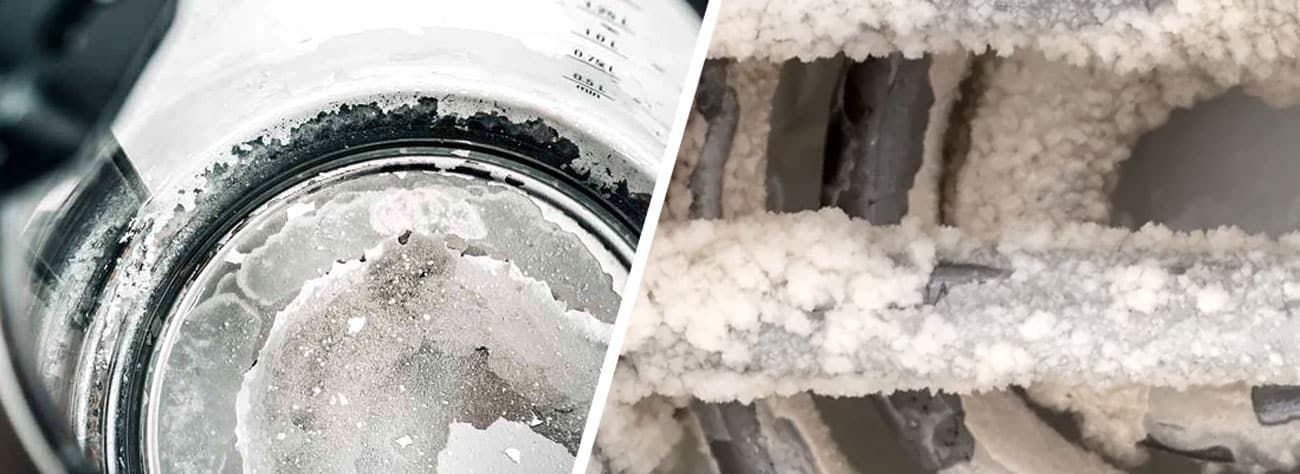
How to Clean a Coffee Maker to Keep it Free of Calcium, Mineral & Limescale Buildup
Regular maintenance of your coffee maker is essential to ensure its longevity and optimal performance. A critical aspect of this cleaning and maintenance will keep your coffeemaker free from calcium mineral limescale buildup, which will affect the taste of your coffee and the efficiency & longevity of your coffee machine. So, how to clean a coffee maker to keep it free of calcium and other mineral deposits?
Firstly, it's essential to understand where these deposits come from. Remember, that hard water contains a higher concentration of calcium and minerals like calcium and magnesium. When you use such water in your coffee maker, these minerals don't evaporate like water. Instead, they accumulate inside your machine over time, leading to limescale or mineral buildup. This calcium & mineral buildup can cause your coffee maker to work harder than necessary, potentially shortening its lifespan.
This is the most effective way to clean your coffee maker and get your coffee tasting like coffee again while removing these calcium deposits & Limescale involves using white vinegar and water. Vinegar is a natural descaler that can break down these mineral deposits without damaging your machine. To do this:
1. Fill the coffeemaker’s water reservoir with a solution of equal parts vinegar and water.
2. Run the coffee maker as if you were making coffee without the grounds.
3. Halfway through the cycle, please turn off the machine and let it sit for an hour.
This process allows the vinegar solution to break down any stubborn deposits. After an hour, finish the brewing coffee brewing cycle.
Once the coffee brewing cycle is complete, rinse the glass carafe and fill the coffeemaker reservoir with clean water. Run a complete brew cycle with water to rinse any remaining vinegar solution. You may need to repeat this step several times until you no longer smell vinegar.
If you live in an area with hard water, consider using filtered or bottled water in your coffee maker to reduce mineral buildup
Knowing how and when to clean a coffee maker to keep it free of calcium, mineral & limescale buildup can enhance its performance and extend its lifespan. Regular cleaning with a vinegar solution can effectively remove these deposits, ensuring that your coffee always tastes its best.

How To Clean Faucets Clogged with Calcium & Mineral Buildup?
Calcium and mineral deposits can accumulate over time in faucets, causing them to clog and interfere with water flow.
This inconvenience can lead to more serious plumbing issues if not addressed promptly. Therefore, understanding how to clean faucets clogged with calcium and mineral buildup is crucial for homeowners and maintenance personnel.
The first step in resolving this issue is identifying the problem. If your faucet is spraying water unevenly or has a reduced flow, there's a high chance that you're dealing with a calcium or mineral buildup. The cleaning process begins once you've determined that this is the problem.
White vinegar is one of the most effective solutions to clean faucets clogged with calcium and mineral deposits. It's an excellent natural cleaning agent that dissolves these deposits without damaging the faucet. To use it, fill a bag with white vinegar and attach it to the faucet using a rubber band, ensuring that the end of the faucet is submerged in the vinegar.
Let it sit for several hours or overnight if the buildup is severe. After this, remove the bag and use an old toothbrush to remove any remaining deposits. For stubborn areas, a toothpick can be used to dislodge the buildup. Once you've scrubbed every accessible part of the faucet, run warm water to rinse away any loose particles.
In some cases, if the calcium and mineral buildup is too severe or profound within the faucet, you may need to disassemble it for a thorough cleaning. Taking the faucet apart should be done carefully to prevent any damage. You should buy a new faucet if the old one is full of calcium & mineral buildup, especially if there is limescale; that's the white, flaky stuff you need more clarification on this; hiring a professional Denver plumber like Denver Sewer & Water is best.
A commercial cleaner designed explicitly for calcium and mineral deposits can also be effective. These cleaners are typically stronger than vinegar and can remove buildup more quickly. However, they should be used according to the manufacturer's instructions, and precautions should be taken as they can be harsh on some surfaces.
Knowing how to clean faucets clogged with calcium and mineral buildup is crucial in maintaining your drain and pipe bi-monthly cleaning. Regularly checking and cleaning your faucets can prevent severe clogs and ensure their longevity. Whether you decide on a natural solution like vinegar or a commercial cleaner, the key is to act promptly and prevent the buildup from worsening.

Does Hard Water Cause Calcium, Limescale & Mineral Build up?
The question, "Does Hard Water Cause Calcium, Limescale & Mineral Buildup?" has been asked many times, and the short answer is yes. Hard water contains high mineral content and is prevalent in many households and commercial premises. It primarily comprises calcium and magnesium carbonates, bicarbonates, and sulfates. These minerals get dissolved in water as they percolate through deposits of limestone and chalk. The problem arises when these minerals get deposited on surfaces over time, leading to what we commonly refer to as hard water stains or scale buildup.
The first component of hard water buildup is calcium. Calcium is a mineral naturally present in hard water. When the water is heated or left to evaporate, the calcium ions in the water react with carbonates in the air to form calcium carbonate, a hard, chalky substance that can adhere to various surfaces such as plumbing fixtures, appliances, and kitchenware. If not appropriately managed, this can cause significant damage over time.
Secondly, limescale is another type of buildup caused by hard water. Limescale is a hard crust of calcium carbonate that forms when hard water evaporates or gets heated. Calcium, minerals & limescale can be particularly problematic in kitchen faucet appliances like coffeemakers, kettles, and boilers where water is frequently heated. Over time, limescale can impair the functionality of these appliances, reduce their lifespan, and lead to increased energy consumption.
Finally, besides calcium and limescale, hard water can cause a variety of other mineral buildups. These include deposits of magnesium, iron, and other minerals in hard water. These minerals can accumulate on surfaces over time, leading to discoloration and damage.
Hard water does indeed cause calcium, limescale, and other mineral buildups. Calcium, minerals & limescale are not just an aesthetic issue but can also lead to significant damage and inefficiency in household and commercial appliances. Therefore, it is essential to take measures to prevent or mitigate the effects of hard water. These include installing a water softening system, regularly cleaning and descaling affected surfaces, or using specific cleaning products designed to combat hard water buildup.
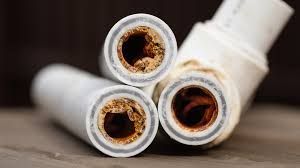
What Removes Calcium from Hard Water, How Does It Work?
Hard water can cause various issues, from leaving unsightly residue on surfaces and appliances to affecting the performance of soaps and detergents. The primary cause of hard water is a high concentration of minerals, predominantly calcium and magnesium. So, what removes calcium from hard water, and how does it work?
Water softening systems are the most common solution to this problem. Water softening systems utilize a process that is known as ion exchange to completely remove calcium from hard water. In an ion exchange system, the hard water is passed over a bed of resin beads charged with sodium ions. When the hard water comes into contact with these beads, the calcium ions are attracted to the beads and displace the sodium ions, which then dissolve into the water. This process effectively removes calcium from hard water, replacing it with sodium and softening it.
Another method that removes calcium from hard water is reverse osmosis. This process uses pressure to force water through a semi-permeable membrane, which only allows water molecules to pass through while filtering out larger molecules like those of calcium and other minerals. While this method effectively removes calcium from hard water, it also removes other beneficial minerals and can be more costly and energy-intensive than ion exchange systems.
A third method uses chelating agents, such as citric acid or EDTA. These substances bind with the calcium ions in the hard water, forming a stable complex that can be easily rinsed away. This method is often used in detergents to combat the effects of hard water, but it can also be used in standalone water treatment systems.
There are several ways to remove calcium from hard water. Ion exchange systems work by replacing calcium ions with sodium ions, reverse osmosis forces water through a membrane that filters out calcium and other minerals, and chelating agents bind with calcium ions to form a complex that can be easily rinsed away. Each method of removing calcium has advantages and disadvantages, but all can soften hard water by removing calcium.
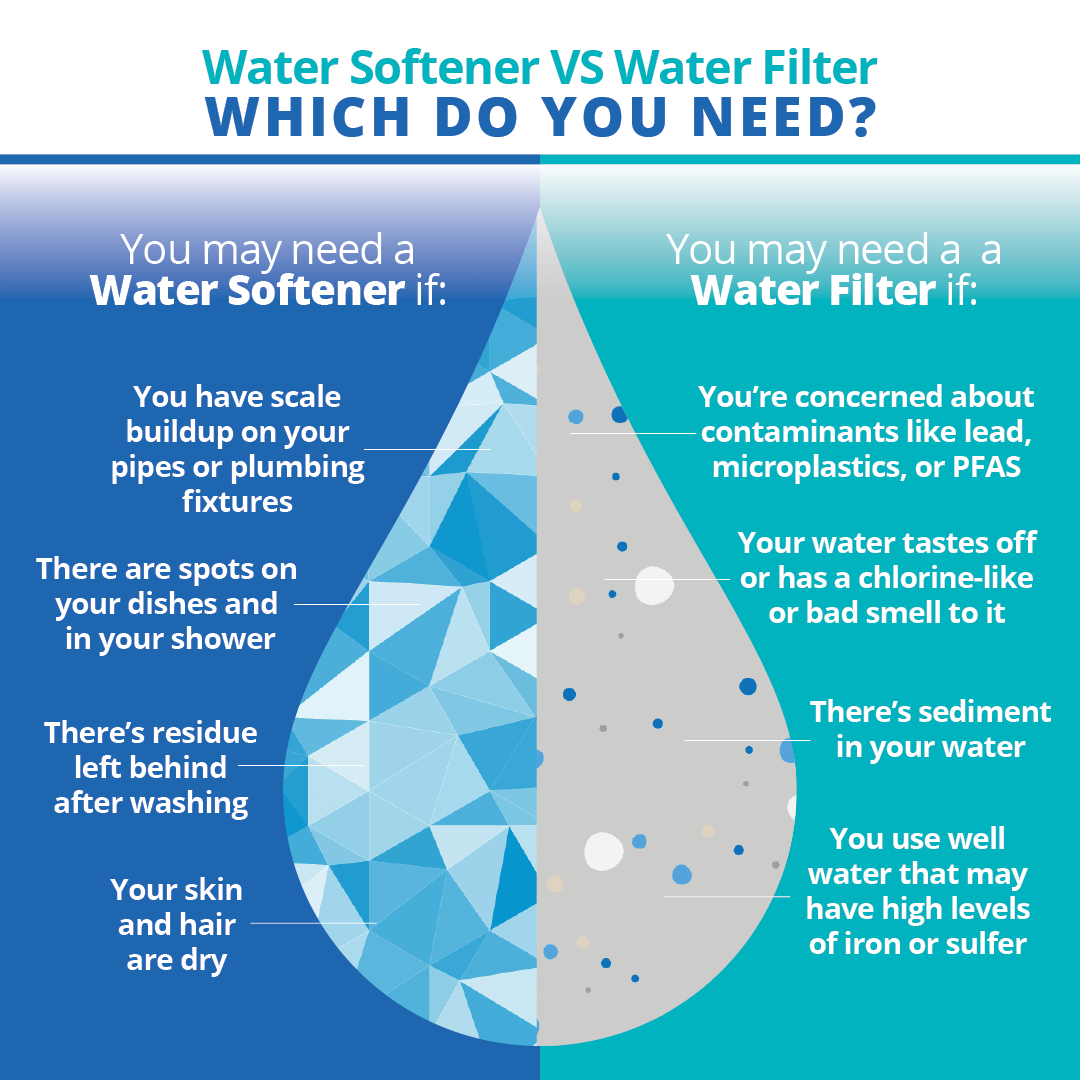
How To Filter Calcium from Water?
Understanding how to filter calcium from water is crucial for residential and commercial property owners. Calcium in water often manifests as hard water, which can cause several problems, such as scale buildup in pipes and appliances, skin irritation, and poor soap performance. Therefore, knowing how to filter calcium from water can help mitigate such issues and improve the overall quality of your water.
Several methods exist to filter calcium from water. One of the most common and effective methods is using a water softener system. This system works by exchanging calcium ions in the water with sodium ions through a process known as ion exchange. The result is softer water, less damaging to pipes, and more favorable for washing and cleaning.
Another method of removing calcium from water is reverse osmosis. In this method, water is forced under pressure through a semi-permeable membrane that filters out contaminants, including calcium. While this method is highly effective in removing calcium, it also removes other beneficial minerals from the water. Therefore, it might be necessary to reintroduce these minerals back into the water after treatment.
A third method to filter calcium from water involves sequestration agents such as polyphosphates. These agents bind to the calcium ions in the water, preventing them from forming scale. While this method does not remove calcium from the water, it neutralizes its effects, making it a viable option for those who want to retain the beneficial minerals in their water.
Lastly, distillation is also an effective way to filter calcium from water. In this process, water is boiled, and the steam is collected and condensed into liquid form. This method removes not only calcium but also other impurities that may be present in the water.
Remember, there are several methods for filtering calcium from water. The choice of method largely depends on individual needs and circumstances, such as the severity of the hard water problem, the desired water quality, and the budget available for water treatment systems. Regardless of the chosen method, filtering calcium from water is essential in maintaining the quality and longevity of your plumbing systems and appliances.
How To Get Rid of Hard Water?
Dealing with hard water is a common issue that can significantly impact residential and commercial settings. From clogged pipes to less effective soap and detergent and from stained clothing to skin irritations, the high mineral content of hard water is a nuisance that many homeowners and businesses would prefer to avoid. So, let's delve into the question:
Investing in a water-softening system is the most common method of eliminating hard water. Water softeners can be expensive and work by exchanging calcium and magnesium ions in hard water with sodium or potassium ions, thereby reducing its hardness. These systems come in various sizes and models to cater to different needs and budgets.
Another way to combat hard water is through the use of vinegar. Vinegar, specifically white vinegar, can help dissolve mineral deposits left by hard water. This method is particularly effective for cleaning household items such as showerheads and faucets affected by hard water.
There are also options available for those interested in a more natural approach. Distilled or rainwater is naturally soft and can be used for certain applications, such as washing hair or clothes. Alternatively, you can boil hard water, which causes the minerals to precipitate out. This treated water can then be used for various purposes.
Suppose you're wondering how to get Rid of Hard Water on a larger scale, for instance, in an apartment building or commercial establishment. In that case, consider a commercial water treatment system. These water softening systems are designed to treat large volumes of water and effectively reduce its hardness.
It's worth noting that while getting rid of hard water can alleviate many problems, it's only sometimes necessary. In fact, the minerals found in hard water are essential for human health and even contribute to water taste. Therefore, it's required to balance your water's hardness and specific needs.
There are several ways to Get Rid of Hard Water, ranging from water-softening systems and vinegar treatments to naturally soft water or commercial treatment systems. Assessing your needs and budget before deciding on the best method it could be expensive. Remember, while hard water can cause various issues, it's not always necessary to get rid of hard water completely. A balanced approach can provide the best results.
What Should you Use to Clean Washing Machine Hoses With?
Maintaining your washing machine's efficiency and longevity involves regular cleaning of the drum and hoses. The question arises—what should you use to clean washing machine hoses? The answer lies in a combination of household items that are easily accessible and effective in removing any accumulated grime or calcium, mineral, or limescale buildup in the hoses.
One might wonder, what should you use to clean washing machine hoses that can effectively remove any soap scum, lint, or mineral deposits? Vinegar and baking soda mixture will do wonders. Vinegar because of it's acidity is an excellent cleaning agent that can help dissolve residue buildup, while baking soda can scrub away any stubborn grime. Disconnect the hoses, run a mixture of equal parts vinegar and baking soda through them, let it sit for a few minutes, then rinse with warm water.
Another answer to "What" should you use to clean washing machine hoses"?" could be commercial cleaning products specifically designed for washing machines. These typically contain powerful cleansing agents that effectively break down any residue or buildup inside the hose. However, always make sure you follow the manufacturer's instructions for use to avoid damaging your hoses.
In case of a severe clog or stubborn residue, one might ask - what should you use to clean washing machine hoses? In such cases, using a plumber's snake or similar tool can help dislodge the blockage. After clearing the clogged pipe, a vinegar and baking soda solution or commercial cleaner should be run through the hoses to ensure thorough cleaning.
Moreover, prevention is always better than cure. Remember to clean the washing machine hoses, and it's advisable to establish a regular cleaning routine for your washing machine. Cleaning the washing machine includes the drum, detergent dispenser, and, of course, the hoses. Regular maintenance helps prevent buildup and extend the life of your appliance.
There are various solutions to the question, "What should you use to clean washing machine hoses?" From homemade remedies like vinegar and baking soda to commercial cleaners and tools like a plumber's snake, the focus should be practical and regular cleaning. Once you clean the washing machine hoses a few times, you will see how nice and clean they are. Cleaning the washing machine will ensure its optimal performance and extend its lifespan.
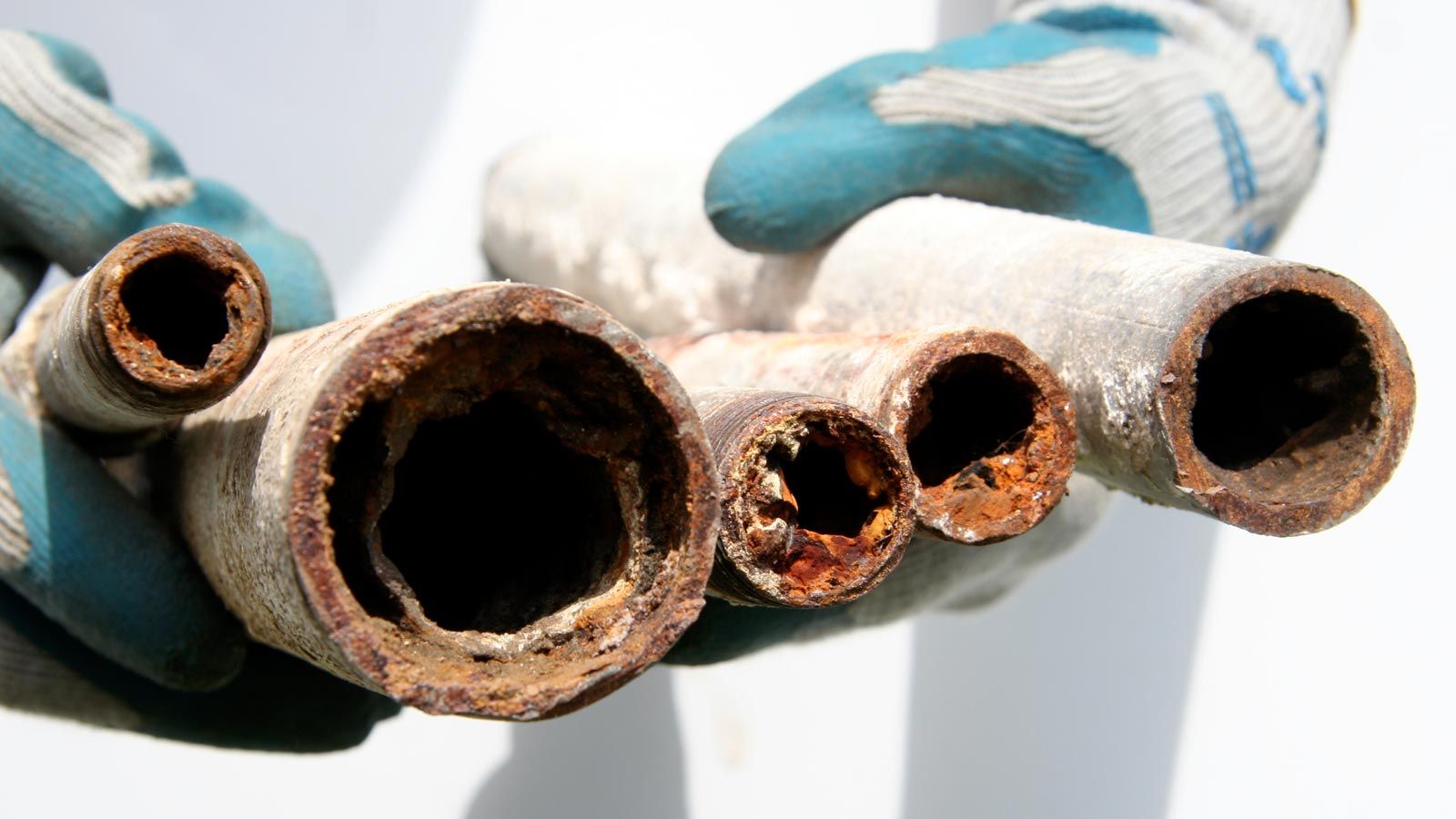
Removing Calcium Build Up
Calcium buildup is common in areas where water is regularly used, such as bathrooms and kitchens. It can be white, chalky residue on sinks, faucets, showerheads, and other surfaces. While it's not harmful to health, calcium buildup can be unsightly and impede appliances and plumbing functions. Therefore, removing calcium buildup is critical to maintaining these areas' aesthetic and functional integrity.
Removing calcium buildup may seem challenging initially, but it does not always require professional intervention. Numerous techniques for DIY calcium removal are both efficient and cost-effective. One of the most common methods involves using vinegar, a natural acid, to dissolve the calcium deposits. Removing calcium buildup involves soaking the affected area or appliance in vinegar for several hours and scrubbing off the loosened deposits. Repeat this process as necessary until all the buildup is removed.
However, you may need commercial cleaning products to remove calcium buildup for more stubborn or extensive calcium deposits. These products often contain more vital acids that quickly dissolve significant buildup. However, follow the product instructions carefully, as misuse can damage certain materials.
Alternatively, if you are dealing with a significant buildup or if the buildup is in hard-to-reach locations, you may want to consider the highly effective option of hiring a professional cleaning service. These experts have specialized tools and knowledge that can effectively remove calcium deposits without causing any damage, giving you peace of mind.
Moreover, taking proactive steps to prevent future calcium buildup can save you a lot of time and hassle in the long run. This might involve installing a water softening system to reduce the amount of calcium in your water supply or frequently cleaning areas where water is regularly used to prevent deposits from forming. By doing so, you're not just managing the issue, but also taking control of it.
Ultimately, removing calcium buildup is an important aspect of home maintenance that should not be overlooked. Whether you're using natural remedies, commercial products, or professional services, the goal is to keep your home looking its best and your appliances running smoothly. Through regular cleaning and preventative measures, you can effectively manage calcium buildup and prevent it from becoming an issue in your Denver home.
Calcium Buildup In Drain Pipes
Calcium buildup in drain pipes is a common household issue that, if left unchecked, can lead to serious plumbing problems. It is a curse that hard water creates. Did you know that hard water contains high levels of minerals such as calcium, limestone, and magnesium. When the water evaporates or is drained away, these minerals are left behind and accumulate on the pipes' interior surfaces.
One of the main concerns with calcium buildup in drain pipes is the decrease in water flow. Over time, the accumulated mineral deposits can restrict water flow, leading to slow drainage and even complete blockages. Calcium buildup in drain pipes affects the efficiency of your plumbing system and can result in costly repairs if the pipes become too clogged and need to be replaced.
One of the most concerning issues with calcium buildup in drain pipes is the potential for bacteria growth. The rough surface of the mineral deposits gives bacteria an ideal environment to thrive. Calcium buildup can lead to more than unpleasant odors from your drains; it could pose a health risk if the bacteria contaminate your home's water supply.
There are several ways to tackle calcium buildup in drain pipes. Regular maintenance is critical, including frequently running hot water through your pipes to dissolve minor buildups and using a pipe cleaner or drain snake to remove more extensive blockages. For more severe cases, you may need chemical treatments or professional plumbing services.
Remember to consider the problem of calcium buildup in drain pipes. Regular maintenance and early intervention can be your best defense, preventing severe damage to your drain pipes and ensuring your drains remain clean and efficient. Remember, it's always better to use an ounce of prevention than a pound of cure when it comes to maintaining the health of your home's drain, water & sewer pipes.
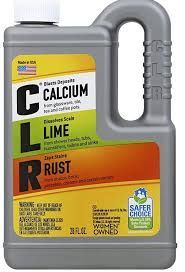
What is the Best Drain Cleaner for Calcium Deposits
The issue of dealing with calcium deposits in your drainage systems is not just a common problem, but a crucial one that can significantly impact the efficiency and longevity of your system. These deposits, often referred to as hard water stains, are a frequent occurrence in both households and industrial settings. If left untreated, they can accumulate over time, causing reduced water flow and potential damage.
So, what is the best drain cleaner for calcium deposits? Vinegar is one of the most effective home remedies for this issue. Its acidic nature helps dissolve the calcium deposits, restoring your drains to their former functionality. However, while vinegar is an excellent solution for minor calcium buildups, it might be less effective for severe cases.
A more potent solution may be required for tough calcium deposits. Commercial drain cleaners specifically designed to deal with calcium deposits generally contain strong acids or other chemicals that can dissolve the buildup more effectively. Due to their corrosive nature, these cleaners should be handled with care, and it's important to make sure to follow the instructions on the packaging for safe use.
One such product is CLR (Calcium Lime Rust), a powerful formula that effectively tackles stubborn calcium, lime, and rust deposits. This non-toxic, multipurpose cleaner is ideal for various surfaces, including stainless steel, glass, fiberglass, and ceramic. It is also septic-safe and contains no phosphates, making it an eco-friendly option.
Another contender for the best drain cleaner for calcium deposits is Lime-A-Way. This product is specifically designed to handle hard water stains and mineral deposits. It works by breaking down the calcium deposits on a molecular level, allowing them to be easily rinsed away.
However, it's worth noting that prevention is often the best solution. Regular maintenance and cleaning can prevent calcium deposits from forming. Using water softeners or conditioners can also help reduce the hardness of your water, thus reducing the likelihood of calcium deposit formation.
Ultimately, choosing the best drain cleaner for calcium deposits depends on the severity of the buildup and your personal preference. Whether you choose a natural solution like vinegar, a commercial cleaner like CLR or Lime-A-Way, or a preventative measure like water softeners, the key is promptly addressing calcium deposits. However, it's worth noting that prevention is often the best solution. Regular maintenance, cleaning, and using water softeners can significantly reduce the likelihood of calcium deposit formation, ensuring the health and efficiency of your drainage system.
Scaling in Water, what Does Water Scaling Mean?
Scaling in water, also known as limescale, refers to the buildup of hard, off-white, chalky deposits in kettles, hot-water boilers, and the pipes of water-heating systems. This deposit primarily comprises calcium carbonate, a mineral commonly found in limestone and chalk. The problem arises when water containing high levels of calcium and magnesium, often termed hard water, is heated or left to evaporate, leaving behind these mineral deposits.
When we talk about water scaling, we are discussing the result of a chemical reaction in which certain minerals in the water react to heat and oxygen to form solid deposits. This process is generally harmless to human health but can cause substantial damage to water systems and appliances.
Water scaling is an issue that affects both households and industries. At home, it can lead to inefficient heating, increased energy consumption, and lower appliance lifespans. The buildup can clog pipes and reduce water flow, leading to increased maintenance costs. In industries such as manufacturing or power generation, where large amounts of water are used for cooling purposes, scaling can be detrimental to the efficiency and operational lifespan of the equipment. By preventing water scaling, significant cost savings can be achieved.
It is important to note that scaling in water is not just a result of hard water. Other factors such as pH levels, temperature, and the presence of certain bacteria can also cause or accelerate the process. Therefore, it is not just necessary but our responsibility to conduct regular checks on water quality and maintain appropriate standards.
So, what does water scaling mean for us? It signifies the importance of regular maintenance and monitoring of our water systems - at home or in industries. It's about ensuring clean, safe drinking water and maintaining the efficiency and longevity of our appliances and industrial equipment. Various methods, such as water softeners, reverse osmosis, or magnetic descaling, can reduce or prevent water scaling.
Understanding what water scaling means is crucial in our quest to ensure efficient energy use, prolong the lifespan of our appliances and equipment, and maintain the overall health of our water systems. It is a phenomenon that may seem trivial but has far-reaching implications if left unchecked.
How To Clean Pipeline at Home?
Maintaining the cleanliness and functionality of your home's plumbing system is a crucial aspect of home maintenance. Neglecting this can lead to blockages, water damage, and costly repairs. Therefore, learning how to clean pipelines at home is a valuable skill.
First, to understand how to clean pipelines at home, it's important to identify the type of pipe that requires attention. This could be a drain pipe from a sink, bathtub, or toilet. Different types of pipelines may require different cleaning methods.
To clean sink or bathtub pipelines, start by removing any visible blockages. This can often be hair or soap scum build-up. You can use a plunger or a plumber's snake for this task. If these methods are unsuccessful, consider using a chemical drain cleaner. However, use these products with caution as they can be harmful if they come into contact with your skin or eyes.
From toilet pipelines, a plunger is typically sufficient to dislodge any blockages. If this doesn't work, a toilet auger or snake can be used to reach further into the pipe. Again, if these methods fail, a chemical drain cleaner can be used as a last resort.
Another method on how to clean pipelines at home involves using natural ingredients that you likely already have in your kitchen. A mixture of baking soda and vinegar can be an effective and environmentally friendly way to clean your pipelines. Simply pour half a cup of baking soda into the drain, followed by half a cup of vinegar. Allow the mixture to sit for about 15 minutes, then rinse with hot water.
Preventive maintenance is also part of understanding how to clean pipelines at home. Regularly checking for leaks or drips in your pipes and fixing them promptly can save you from more extensive damage and cleaning down the line.
Lastly, if you find that your efforts on how to clean pipelines at home are unsuccessful or if you're dealing with a major blockage, it may be time to call in a professional. They have the tools and expertise to handle complex plumbing issues and can provide advice on how to maintain your pipelines in the future.
Learning and knowing how to clean pipelines at home is an essential part of home maintenance. Whether you're dealing with a minor blockage or conducting regular maintenance, these tips can help you keep your pipelines clean and functioning properly.

Limescale build-up is widespread, affecting various appliances and fixtures that frequently come into contact with hard water. So, what is limescale build-up exactly? The complex, off-white, chalky deposit often forms on the interior surfaces of pipes, kettles, boilers, and other surfaces where hard water has evaporated.
The primary cause of limescale build-up is the high mineral content found in hard water, particularly calcium and magnesium carbonates. As the water evaporates or gets heated, these minerals precipitate out of the water and solidify into a crusty layer called limescale. Over time, this accumulation can thicken and become more challenging to remove.
But why should we be concerned about limescale build-up? The issue goes beyond mere aesthetics. Limescale build-up can significantly affect the efficiency and lifespan of appliances. For instance, when limescale forms on heating elements, the limescale acts as an insulator, preventing the efficient transfer of heat to the water. This limescale creates inefficiency, leading to higher energy consumption and, consequently, higher bills. In severe cases, limescale build-up can lead to complete appliance failure.
Furthermore, in plumbing systems, limescale build-up can constrict water flow, reducing water pressure and leading to potential blockages. In addition to causing functional issues, limescale can harbor bacteria, posing possible health risks.
So, what is the solution for limescale build-up? There are several methods to tackle this issue. One can use chemical descalers or household things you may have on hand like vinegar, lemon juice, and baking soda can dissolve the mineral deposits. However, these are often temporary solutions and may need to be more effective against heavy build-ups. Installing a water softener is a more permanent solution, as it treats hard water by removing the minerals responsible for limescale formation.
Understanding limescale build-up and the potential problems the limescale can cause makes it crucial for cleaning & maintaining the longevity and efficiency of our appliances and plumbing systems. Regular cleaning & maintenance and using appropriate water treatment methods can help mitigate the effects of limescale and calcium buildup, saving you from costly repairs or replacements in the long run.
Do You Have Calcium, Mineral or Limescale Build Up?
It can cause Major Problems with Drains & Pipes. Call Denver Sewer & Water
To clean sink or bathtub pipelines, start by removing any visible blockages. This can often be hair or soap scum build-up. You can use a plunger or a plumber's snake for this task. If these methods are unsuccessful, consider using a chemical drain cleaner. However, use these products with caution as they can be harmful if they come into contact with your skin or eyes.
From toilet pipelines, a plunger is typically sufficient to dislodge any blockages. If this doesn't work, a toilet auger or snake can be used to reach further into the pipe. Again, if these methods fail, a chemical drain cleaner can be used as a last resort.
Another method on how to clean pipelines at home involves using natural ingredients that you likely already have in your kitchen. A mixture of baking soda and vinegar can be an effective and environmentally friendly way to clean your pipelines. Simply pour half a cup of baking soda into the drain, followed by half a cup of vinegar. Allow the mixture to sit for about 15 minutes, then rinse with hot water. You may have a Calcium, Mineral or Limescale problem that you can’t clean? Call Us at 720-935-6221
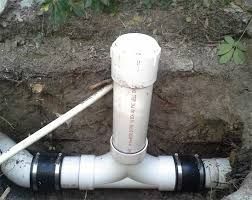
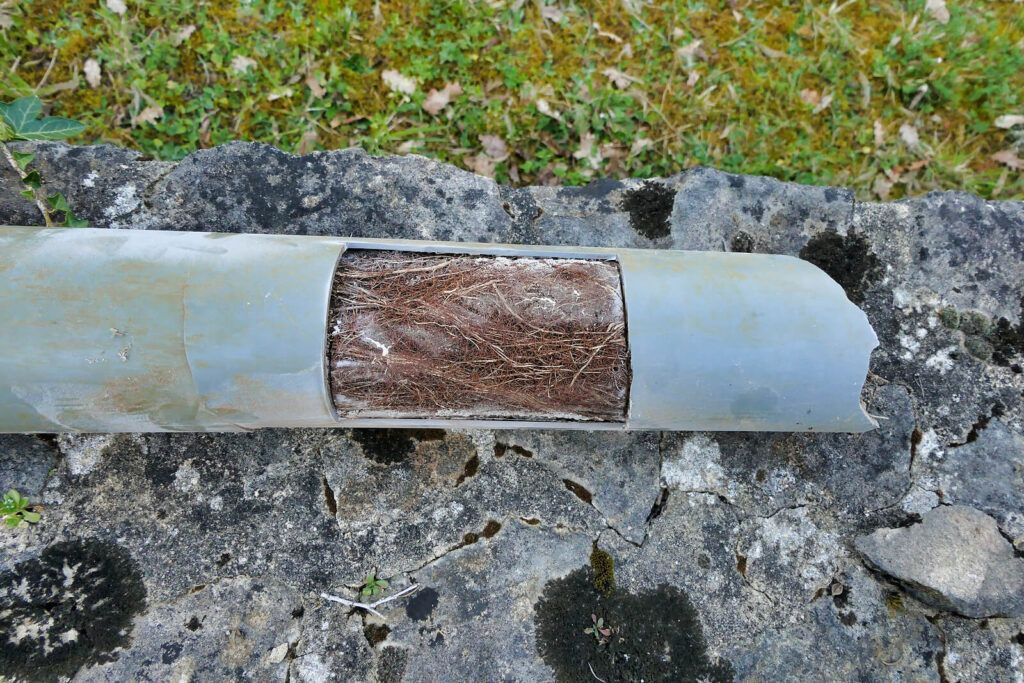
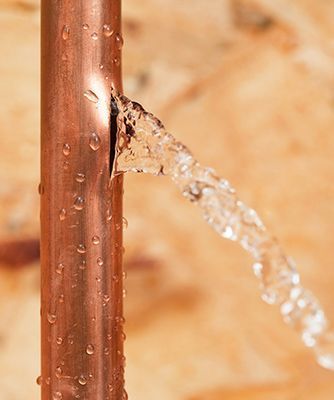
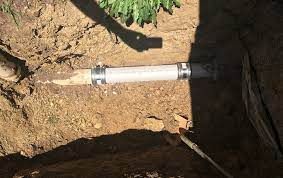
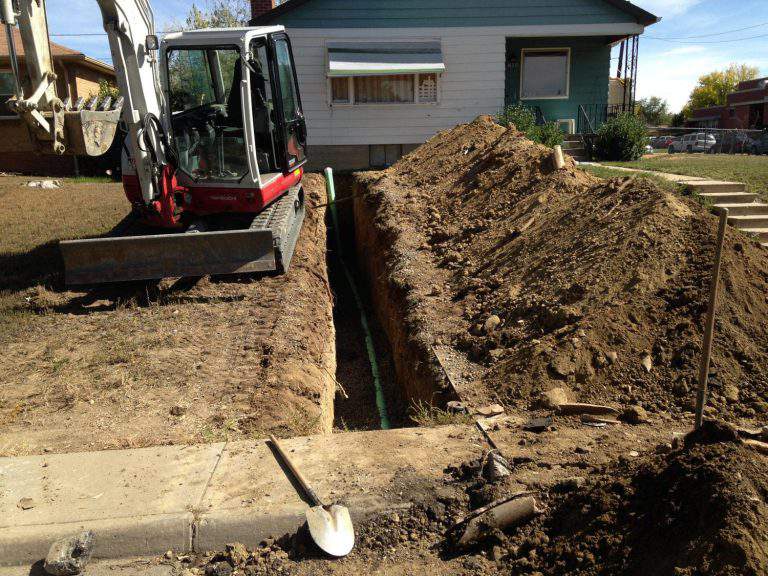
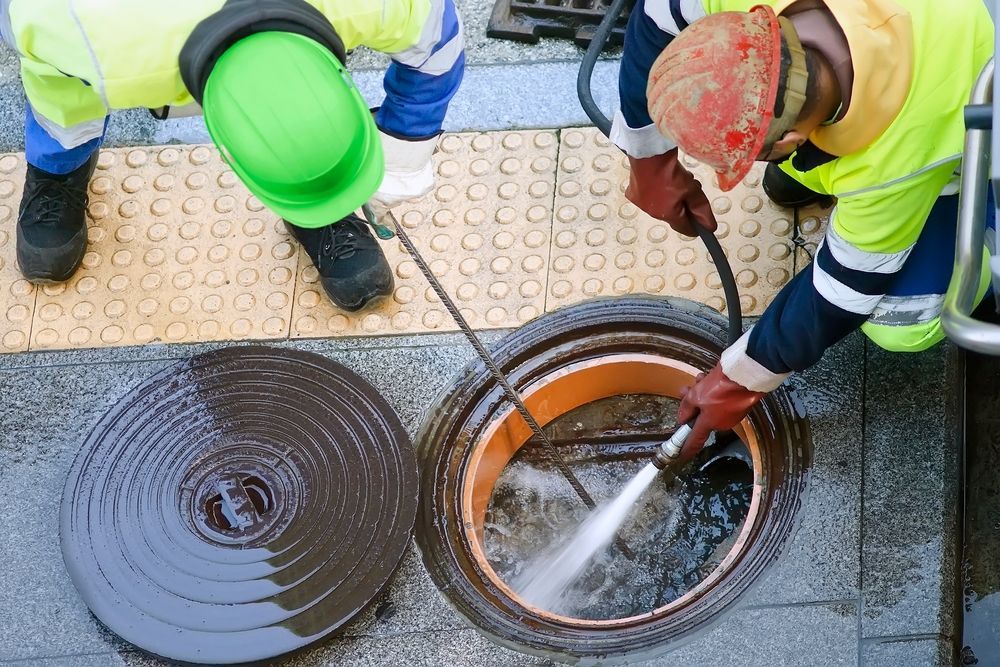


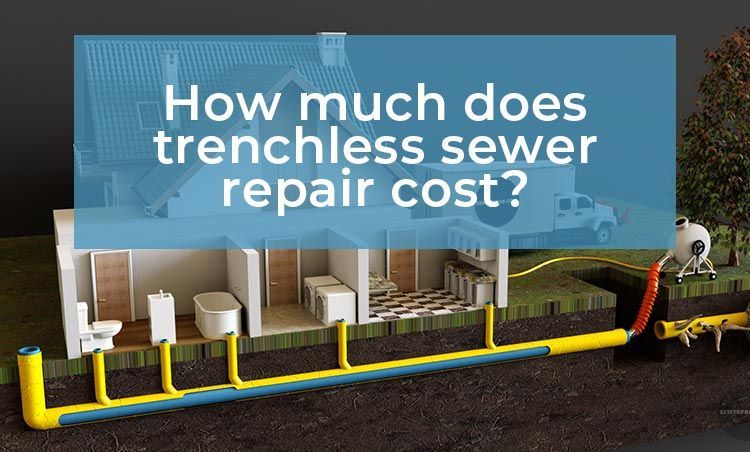
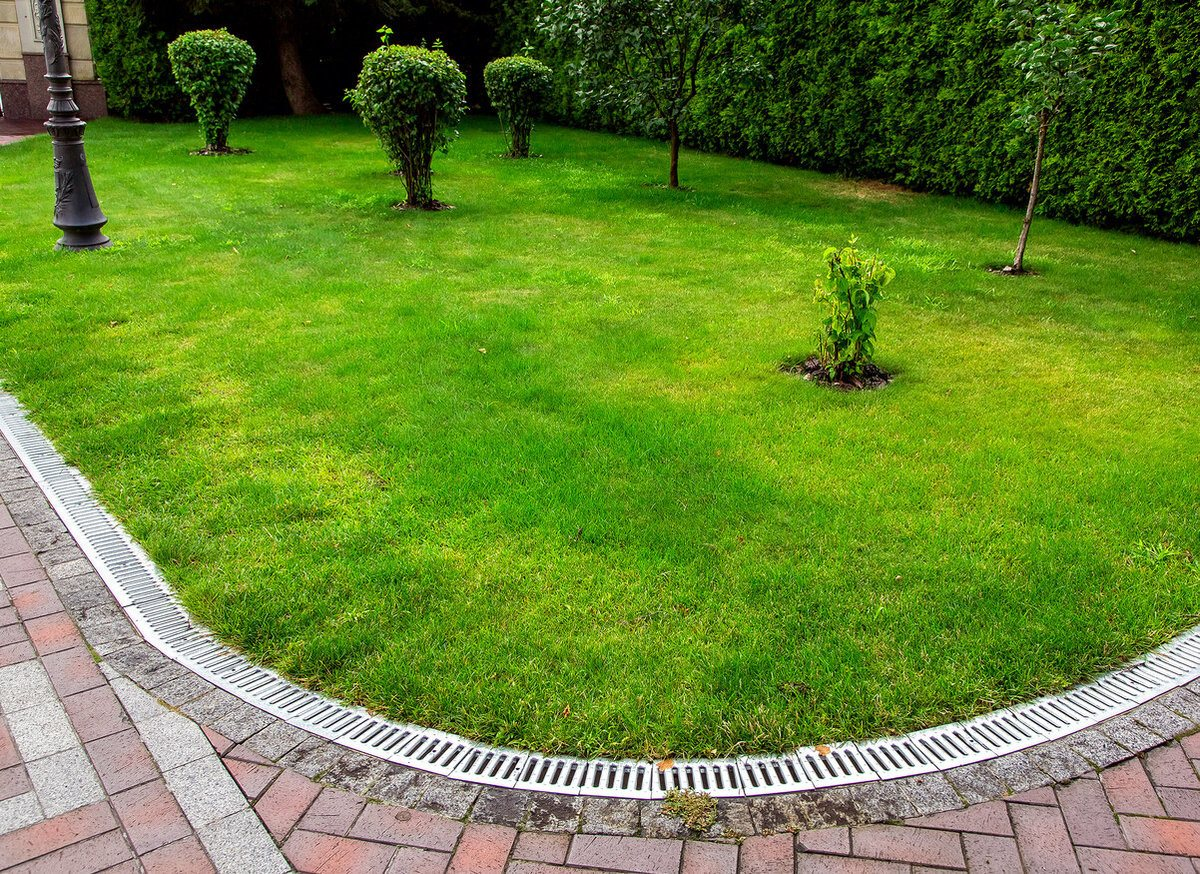
Service Areas
Denver's Choice for Sewer Line Repair
We're the company to call for superior quality and the best sewer repair services. With more than 20 years of experience, we're fully committed to providing excellent service. And it shows – we've won the Angie's List Super Service Award for outstanding service six years in a row.
We're also a BBB Accredited Business with an A+ rating, so you can trust that we stand behind our work. Don't hesitate to contact us for all your Denver sewer line needs.
Contact Details
Email: info@denversewerandwater.com
Number: (720) 935-6221 | (720) 935-6221
Address: 2491 W Iliff Ave, Denver, CO 80219
Business Hours
Monday - Sunday
7:00 am - 11:00pm
Emergency Service
24 hours / 7 days
Quick Links
All Rights Reserved | Denver Sewer and Water
Design & SEO by MobileOpz
